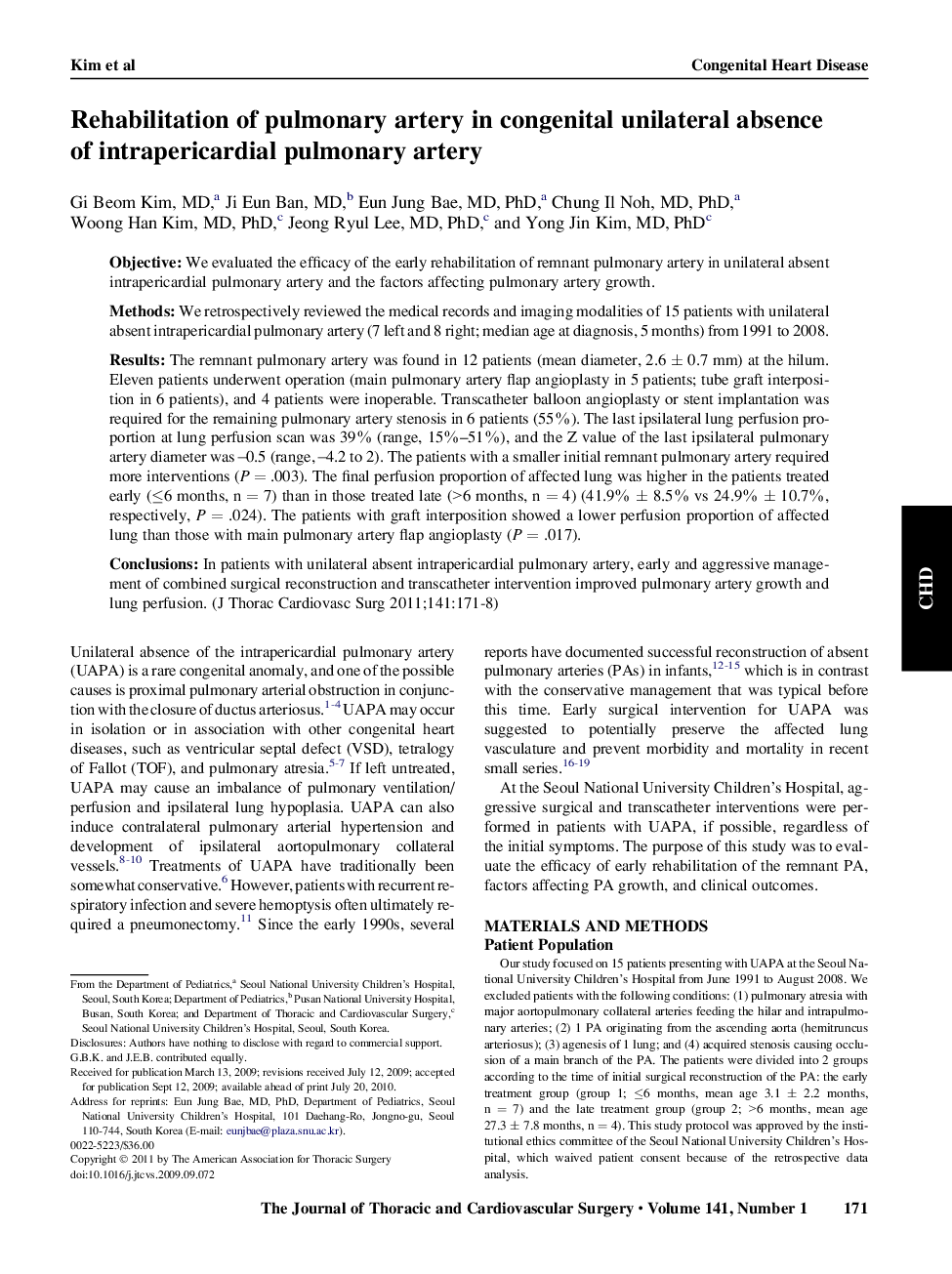| Article ID | Journal | Published Year | Pages | File Type |
|---|---|---|---|---|
| 2983287 | The Journal of Thoracic and Cardiovascular Surgery | 2011 | 8 Pages |
ObjectiveWe evaluated the efficacy of the early rehabilitation of remnant pulmonary artery in unilateral absent intrapericardial pulmonary artery and the factors affecting pulmonary artery growth.MethodsWe retrospectively reviewed the medical records and imaging modalities of 15 patients with unilateral absent intrapericardial pulmonary artery (7 left and 8 right; median age at diagnosis, 5 months) from 1991 to 2008.ResultsThe remnant pulmonary artery was found in 12 patients (mean diameter, 2.6 ± 0.7 mm) at the hilum. Eleven patients underwent operation (main pulmonary artery flap angioplasty in 5 patients; tube graft interposition in 6 patients), and 4 patients were inoperable. Transcatheter balloon angioplasty or stent implantation was required for the remaining pulmonary artery stenosis in 6 patients (55%). The last ipsilateral lung perfusion proportion at lung perfusion scan was 39% (range, 15%–51%), and the Z value of the last ipsilateral pulmonary artery diameter was −0.5 (range, −4.2 to 2). The patients with a smaller initial remnant pulmonary artery required more interventions (P = .003). The final perfusion proportion of affected lung was higher in the patients treated early (≤6 months, n = 7) than in those treated late (>6 months, n = 4) (41.9% ± 8.5% vs 24.9% ± 10.7%, respectively, P = .024). The patients with graft interposition showed a lower perfusion proportion of affected lung than those with main pulmonary artery flap angioplasty (P = .017).ConclusionsIn patients with unilateral absent intrapericardial pulmonary artery, early and aggressive management of combined surgical reconstruction and transcatheter intervention improved pulmonary artery growth and lung perfusion.
